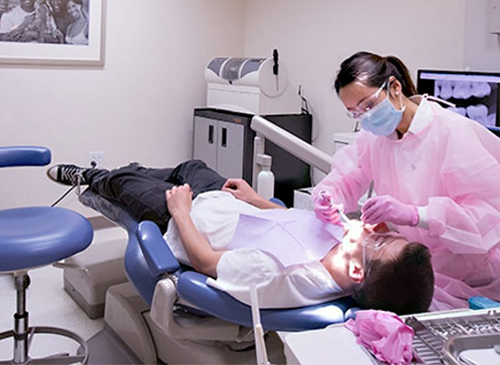Dental Care for Medically Compromised Patients

Certain medical conditions and their accompanying drug treatment do have an impact upon oral structures and the delivery of dental care. Recent evidence suggests that oral health could be a significant risk factor for coronary artery disease. Many medical conditions can affect dental care are often over-stated and lack an evidence base. Examples include the need for antibiotic cover in patients at risk from infective endocarditis and the necessity to provide supplementary corticosteroids for those patients on longterm steroid therapy. By contrast, certain systematic drug treatments can have a profound affect on the oral tissue. The most obvious is drug-induced gingival overgrowth. Drugs frequently implicated in this unwanted effect include phenytoin, ciclosporin and the calcium channel blockers. Several risk factors for drug-induced overgrowth have been identified and include age, sex, peridontal variables and a range of drug pharmacokinetic variables. The relationship between oral health and coronary artery disease opens up a potentially new vista for the delivery of oral care. Although the association is convincing, casualty has not been established. If casualty for this relationship can be confirmed then the delivery of dental care and the promotion of oral health will receive a significant impetus.
Placing dental jewelry is painless and does not require any injection. The tooth will not be drilled for placement of dental jewelry and only takes 15 minutes for the entire procedure. Dental jewelry is firmly bound to the tooth similar to an orthodontic bracket. The chances of it falling while eating are very rare. The bonding procedure has also been simplified and is completely reversible and safe.
Tooth Gems
Gems are available in all different shapes and sizes. Some popular choices include diamonds, sapphires, rubies, crystals. However, opting for precious or nonprecious metals and crystals or diamonds is just a matter of personal choice. “Twinkles" is a small jewel designed to be bonded to your tooth. A precious stone set in pure gold to enhance your smile and emphasize your personality. These stones are available in various shapes like heart, drop, triangle, and round as well as the star. Twinkles are safe, reversible, exclusive body art that leaves no permanent mark, letting you display a fun, personal form of self-expression with a great sense of style.
Dental Jewelry Procedure
The procedure of fixing teeth jewelry is very simple and usually takes about 10 to 15 minutes. Before the procedure, your tooth enamel will be cleaned with a fluoride–free polishing paste, then this portion will be etched with orthophosphoric acid (37%) for 20-30 seconds to increase the surface area of bonding. The next process is the application of a bonding agent which will be left for 20 seconds, Then a small amount of the composite will be placed on the surface of the tooth and the jewel will be picked by a handler and placed in the centre of the composite. The jewel will take 20 seconds to set on the tooth.
Dental Jewelry Aftercare
You should avoid brushing your teeth vigorously and eating spicy or sticky foods. It’s important to maintain proper oral hygiene after a tooth piercing. Also, try not to touch or play with the jewelry once it’s placed. It’s important to have dental check-ups every 6 months to make sure the jewelry is not damaging your teeth or gums.
The longevity of Tooth jewel
These jewels can last for a long time. However, few people need these jewels only for special celebrations or a specific event, and others may retain them for a lifetime. Depending upon the type and purpose of tooth jewelry opted, and consequently its bonding material, this finished product will last for about four months to four years! It is important, that you the patient, know that this procedure is not permanent.
Removal of Tooth Jewel
When you feel that you want to remove the jewel from your teeth, you need to plan a visit to Sharma Dental and get them removed. One should never try to remove the jewel at home as it can badly harm your tooth. The procedure is similar to the removal of orthodontic brackets. When it is removed, the gem/charm is simply popped off and the tooth will be polished to remove any remaining bonding material.
